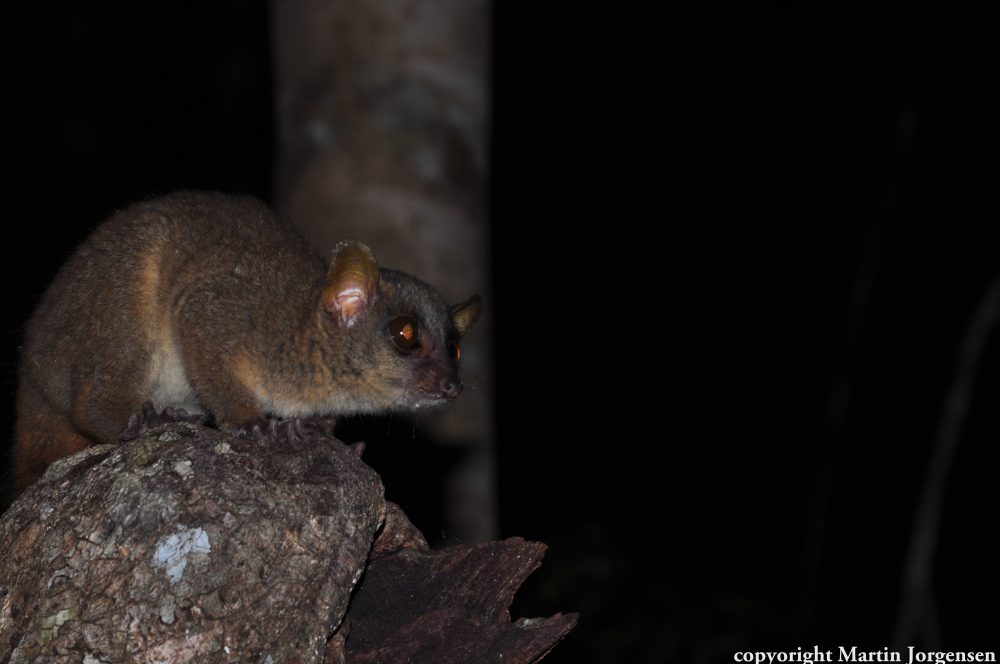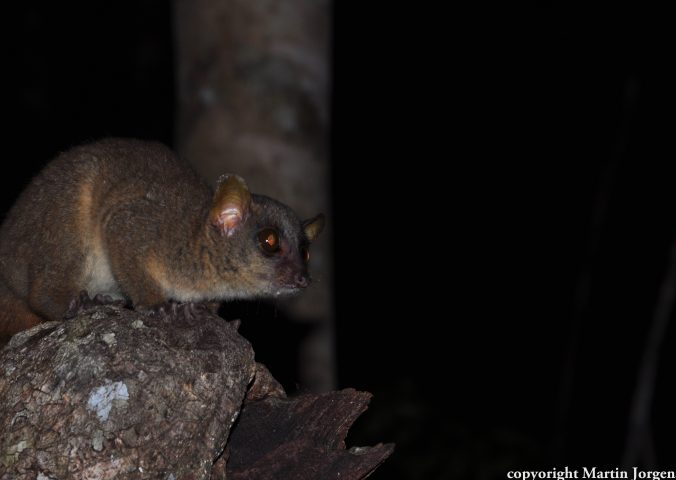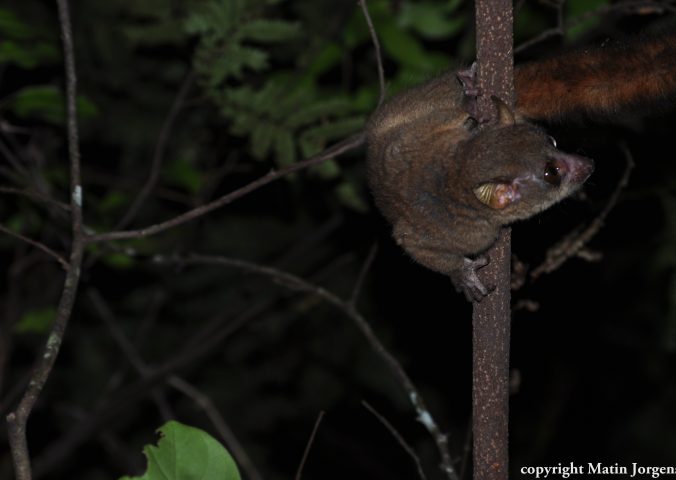About
This unassuming nocturnal lemur has the largest testes to body ratio of all mammals.
This trait is strongly linked to the mating behaviours of species throughout the animal kingdom, with large testes indicating highly promiscuous reproductive behaviour. Not only that, but this sociable species form communal nests which have been found to include multiple adult males; an uncommon behaviour in lemurs. They also reproduce throughout the year, unlike even their closest relatives, likely due to the flexibility afforded to them by feeding on the sugary secretions of the larvae of planthoppers in the dry season. Its’ preferred habitat, dry forests, is one of the fastest declining habitats on Madagascar, with a 40% decrease in forest cover in 25 years.
The Northern giant mouse lemur wasn’t actually discovered until 2005, and since its discovery it has lacked certain aspects of scientific data and life history information to fully understand how to begin preserving and managing the remaining habitat of the species.
- Order: Primates
- Family: Cheirogaleidae
- Population: f
- Trend: decreasing
- Size: 22cm
- Weight: 300g
EDGE Score
Distribution
Endemic to Madagascar and found in Ambato and Pasandava. Their area of occurrence is suggested to be limited by the Maeverano River in the south, and the Mahavavy river in the north.
Habitat and Ecology
This species inhabit dry and secondary forests, old banana plantations, gallery forests and abandoned cashew orchards. They sleep in groups of 2 to 8 animals, including several males. Tall trees with many lianas (vines) are preferred nest sites.





